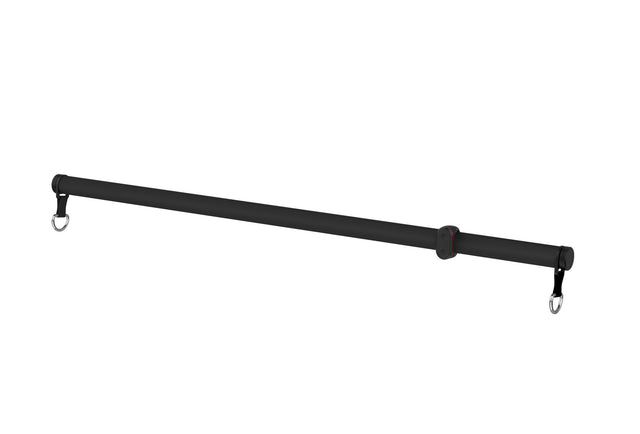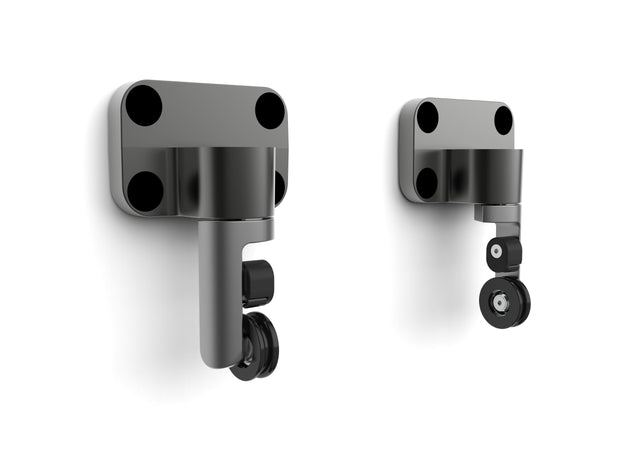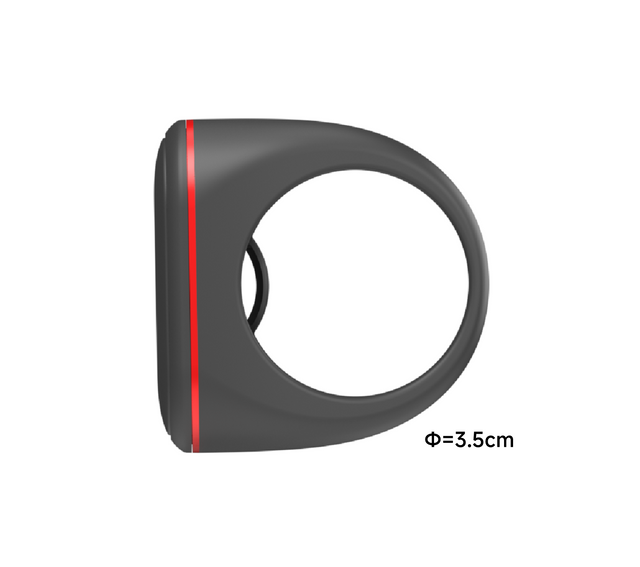In today's fast-paced world, maintaining physical fitness is more important than ever. With busy schedules and limited access to public gyms, many individuals are turning to the solution of building their own home gym. A home gym offers the convenience of working out at any time, eliminates the commute to a commercial facility, and provides a personalized environment tailored to your specific fitness goals. This comprehensive guide will walk you through the essential steps and considerations for building your own home gym, ensuring that you create a space that is both functional and motivating.
1. Assessing Your Space and Setting Goals
Before diving into the specifics of equipment and layout, it's crucial to assess the available space in your home. Whether you have a spare room, a basement, a garage, or even a dedicated corner in your living area, understanding the dimensions and limitations of your space will guide your decisions on equipment and design.
Define Your Fitness Goals
Your fitness goals will significantly influence the type of equipment you need. Are you focused on strength training, cardio, flexibility, or a combination of these? For instance:
- Strength Training: Requires equipment like dumbbells, barbells, resistance bands, and weight benches.
- Cardio: Benefits from machines such as treadmills, stationary bikes, or rowing machines.
- Flexibility and Recovery: Involves yoga mats, foam rollers, and stretching equipment.
By clearly defining your objectives, you can prioritize the necessary tools and avoid unnecessary expenditures.
2. Budgeting for Your Home Gym
Building a home gym can be a substantial investment, but with careful planning, you can create an effective space without breaking the bank. Establish a budget that encompasses all potential costs, including equipment, flooring, mirrors, ventilation, and lighting.
Prioritize Essential Equipment
Start by investing in versatile, multi-functional equipment that can cater to various exercises. This approach maximizes your workout options while minimizing costs and space requirements. Items like adjustable dumbbells, resistance bands, and a sturdy bench can serve multiple purposes and adapt as your fitness levels progress.
Consider Second-Hand Options
Purchasing second-hand equipment can significantly reduce costs. Platforms like Craigslist, Facebook Marketplace, and local fitness groups often have listings for quality used equipment. Ensure that any pre-owned items are in good condition and meet safety standards before purchasing.
3. Selecting the Right Equipment
Choosing the right equipment is paramount to creating an effective and enjoyable home gym. Focus on quality, durability, and versatility to ensure that your investments stand the test of time and support your fitness journey.
Essential Equipment for a Home Gym
-
Adjustable Dumbbells: These save space by combining multiple weight sets into a single pair. They are ideal for a wide range of exercises targeting different muscle groups.
-
Weight Bench: A sturdy, adjustable bench is essential for exercises like bench presses, dumbbell rows, and seated shoulder presses. Look for benches with multiple incline and decline settings for added versatility.
-
Resistance Bands: These are excellent for strength training, flexibility, and rehabilitation exercises. They are lightweight, portable, and come in various resistance levels.
-
Barbell and Weight Plates: For those focused on heavy lifting and compound movements like squats, deadlifts, and bench presses, a quality barbell and a set of weight plates are indispensable.
-
Power Rack or Squat Rack: This provides safety and stability for heavy lifts. Many racks come with built-in pull-up bars and storage options for weights and accessories.
-
Cardio Equipment: Depending on your preference, consider a treadmill, stationary bike, elliptical, or rowing machine. These machines enhance cardiovascular fitness and complement strength training routines.
-
Flooring: Protect your floors and reduce noise with appropriate gym flooring. Interlocking rubber mats are a popular choice due to their durability and ease of installation.
Additional Equipment for Enhanced Workouts
- Kettlebells: Great for dynamic movements and full-body workouts.
- Medicine Balls: Useful for explosive exercises and core strengthening.
- Pull-Up Bar: Ideal for upper body and core exercises.
- Foam Roller: Essential for muscle recovery and maintaining flexibility.
4. Designing the Layout
A well-thought-out layout ensures that your home gym is both functional and aesthetically pleasing. Proper organization and arrangement of equipment can enhance your workout experience and prevent clutter.
Optimize Space Utilization
- Zones: Create distinct zones for different types of workouts. For example, designate an area for strength training, another for cardio, and a space for stretching and recovery.
- Vertical Space: Utilize vertical space by installing wall-mounted racks for storing weights, resistance bands, and other accessories. Shelves and hooks can keep equipment organized and easily accessible.
- Mirrors: Installing mirrors can make the space appear larger and help you monitor your form during exercises.
Ensure Safety and Accessibility
- Clear Pathways: Maintain clear pathways to prevent accidents and allow for smooth movement during workouts.
- Adequate Lighting: Good lighting is essential for safety and motivation. Natural light is ideal, but if that's not possible, invest in bright, adjustable lighting fixtures.
- Ventilation: Proper ventilation keeps the air fresh and prevents the buildup of sweat and odors. Consider installing fans, windows, or an HVAC system to maintain airflow.
5. Personalizing Your Home Gym
Making your home gym a space that you enjoy and feel motivated to use is key to maintaining a consistent workout routine. Personal touches can transform a functional space into your personal fitness sanctuary.
Aesthetic Elements
- Color Scheme: Choose colors that energize and motivate you. Bright colors like red and orange can boost energy levels, while cooler tones like blue and green promote relaxation and focus.
- Artwork and Inspirational Quotes: Decorate your walls with artwork or quotes that inspire you to push harder and stay committed to your fitness goals.
- Music System: Incorporate a sound system or Bluetooth speakers to play your favorite workout tunes, enhancing your exercise experience.
Functional Enhancements
- Smart Technology: Integrate smart devices like fitness trackers, smart mirrors, or connected cardio machines to monitor your progress and personalize your workouts.
- Storage Solutions: Use shelves, cabinets, and storage bins to keep your equipment organized and easily accessible. This not only maintains a clean environment but also prolongs the lifespan of your gear.
- Hydration Station: Keep a water dispenser or a stocked hydration station nearby to stay hydrated during your workouts.
6. Maintaining Your Home Gym
A well-maintained home gym ensures that your equipment remains in good condition and that the space stays inviting and safe for use.
Regular Cleaning
- Wipe Down Equipment: After each workout, wipe down machines, weights, and surfaces to remove sweat and prevent the buildup of grime.
- Vacuum or Sweep Floors: Keep the flooring clean to avoid slips and maintain a pleasant environment.
Equipment Maintenance
- Inspect Regularly: Periodically check your equipment for any signs of wear and tear. Tighten bolts, replace worn parts, and ensure that all machinery functions smoothly.
- Lubricate Moving Parts: For machines with moving parts, regular lubrication can prevent rust and ensure smooth operation.
Organized Storage
- Designate Spaces: Assign specific places for each piece of equipment to avoid clutter and make your workouts more efficient.
- Use Labels: Label storage areas to make it easier to find and return equipment, maintaining an organized space.
7. Maximizing Your Home Gym Experience
To get the most out of your home gym, adopt strategies that enhance your workout routine and keep you motivated.
Create a Workout Schedule
Establish a consistent workout schedule that fits your lifestyle. Whether it's morning sessions, evening workouts, or short bursts throughout the day, consistency is key to achieving your fitness goals.
Set Realistic Goals
Set achievable short-term and long-term fitness goals. Tracking your progress can provide motivation and a sense of accomplishment, encouraging you to stay committed to your routine.
Incorporate Variety
Diversify your workouts to prevent boredom and ensure a balanced fitness regimen. Combine strength training, cardio, flexibility exercises, and functional movements to engage different muscle groups and improve overall fitness.
Seek Professional Guidance
Consider consulting with a fitness trainer to design a personalized workout plan tailored to your goals and equipment. Online resources, workout apps, and virtual classes can also provide structure and inspiration.
8. Overcoming Common Challenges
Building and maintaining a home gym comes with its own set of challenges. Addressing these proactively can ensure a smooth and successful fitness journey.
Limited Space
If space is a constraint, opt for compact and multi-functional equipment. Foldable benches, adjustable dumbbells, and wall-mounted storage can help maximize the available area without compromising functionality.
Budget Constraints
Building a home gym on a tight budget is possible by prioritizing essential equipment, seeking second-hand options, and gradually expanding your setup as funds allow. Remember, consistency in your workouts is more important than having the most expensive gear.
Staying Motivated
Without the social environment of a public gym, staying motivated can be challenging. Set clear goals, track your progress, and create a motivating environment with music, inspirational decor, and a comfortable ambiance to keep your spirits high.
Technical Issues
Equipment can sometimes malfunction or require repairs. Familiarize yourself with basic maintenance procedures and have a contingency plan for workouts in case of equipment downtime.
9. The Benefits of a Home Gym
Investing in a home gym offers numerous advantages beyond convenience and cost savings.
Flexibility and Convenience
Workout whenever you want without being restricted by gym hours or crowded facilities. This flexibility allows you to integrate fitness seamlessly into your daily routine.
Privacy and Comfort
Enjoy the privacy of working out in your own space without the potential intimidation or distractions of a public gym. This can be particularly beneficial for beginners or those who prefer a more secluded environment.
Customization
Tailor your gym to your specific needs and preferences. Whether it's the layout, equipment selection, or aesthetic elements, a home gym can reflect your personal style and fitness goals.
Long-Term Cost Savings
While the initial investment might be significant, a home gym can save money in the long run by eliminating monthly gym memberships and reducing travel expenses.
10. Final Thoughts
Building your own home gym is a rewarding endeavor that empowers you to take control of your fitness journey. By carefully assessing your space, setting clear goals, budgeting wisely, selecting the right equipment, and maintaining your setup, you can create a personal fitness sanctuary that meets your needs and inspires you to stay active and healthy.
Remember, the key to a successful home gym lies not just in the equipment you choose but in your commitment to using it consistently. Embrace the flexibility, privacy, and personalization that a home gym offers, and watch as it transforms your approach to fitness and overall well-being.
Start planning today, and take the first step towards building a home gym that will support your health and fitness goals for years to come.
Keywords Integration
Throughout this guide, we have naturally integrated relevant keywords related to "Building Your Own Home Gym," including:
- Home gym essentials
- Strength training equipment
- Cardio machines
- Space optimization
- Fitness goals
- Workout schedule
- Equipment maintenance
- Budget-friendly home gym
- Personalized fitness space
- Home gym design
These keywords not only enhance the relevance of the content but also ensure that the blog is optimized for search engines, making it easier for fitness enthusiasts to find and benefit from this comprehensive guide.














